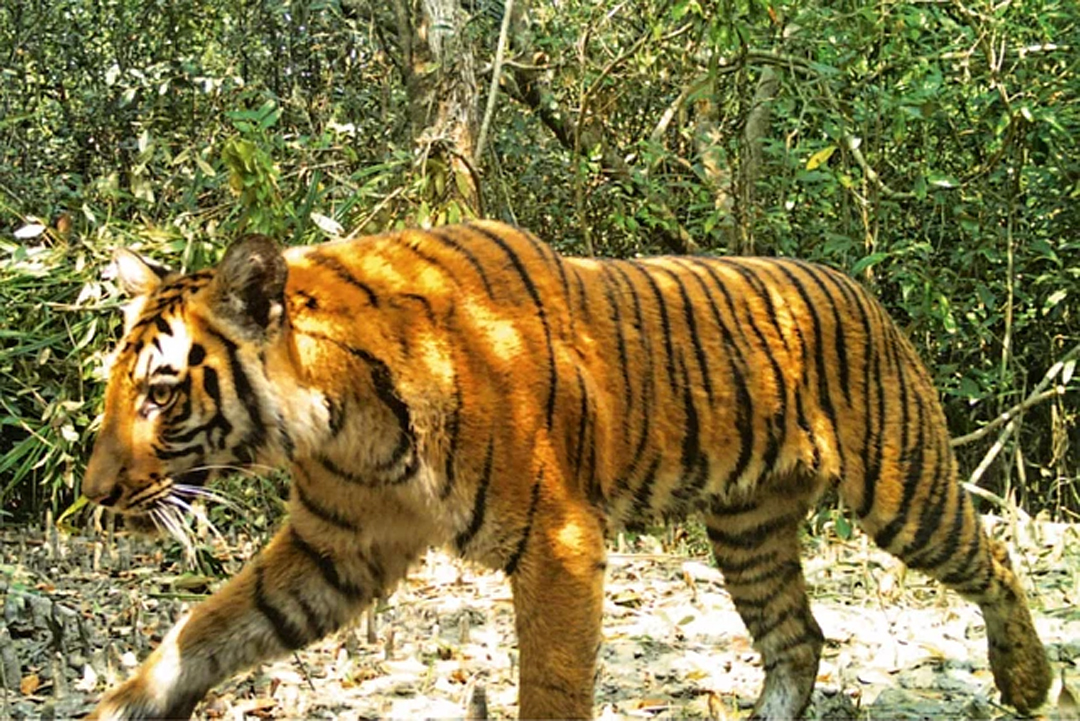Photo: Courtesy
The number of Royal Bengal tigers in Bangladesh's Sundarbans has increased to 125.
The Ministry of Forests has published the results of the third phase of the tiger census.
Syeda Rizwana Hasan, adviser to the Ministry of Environment, Forests, and Climate Change, announced that 125 tigers were recorded in the Sundarbans during the 2023-24 survey, with a tiger density of 2.64 per 100 square kilometres of forest.
During the press conference, the adviser mentioned that the International Union for Conservation of Nature (IUCN) has classified tigers as a critically endangered species in Bangladesh.
She added that in 2013, there were 13 tiger range countries worldwide.
Currently, tigers remain in only 10 countries, including Bangladesh, while tigers have gone extinct in the forests of Vietnam, Cambodia, and Laos. Globally, the tiger population stands at 3,840, according to the adviser.
In the previous surveys, 106 tigers were recorded in 2015, and 114 in 2018. Which means the current tiger population has increased by 9.65% compared to 2018 and by 17.92% compared to 2015.
Adviser Rizwana Hasan further said that the tiger counting process began in January 2023 and continued until March 2024. In the third phase, Khulna, Bagerhat, and Satkhira were divided into four zones for the survey, and an increase in tiger numbers was observed.
The census involved counting tiger footprints every two kilometres, and footage from over 1,200 cameras were analyzed to determine the population, she added.
The Adviser Rizwana also said 21 tiger cubs were photographed this time, whereas in previous surveys, only five cubs were recorded. Tiger cubs are not included in the census due to their high mortality rate.
According to the Forest Department, the Bangladesh portion of the Sundarbans covers an area of 6,017 square kilometres, of which 4,832 square kilometres is forestland and 1,185 square kilometres is wetlands.
The 2015 census indicated that the Sundarbans had 106 tigers, while the 2018 census recorded 114 tigers







































